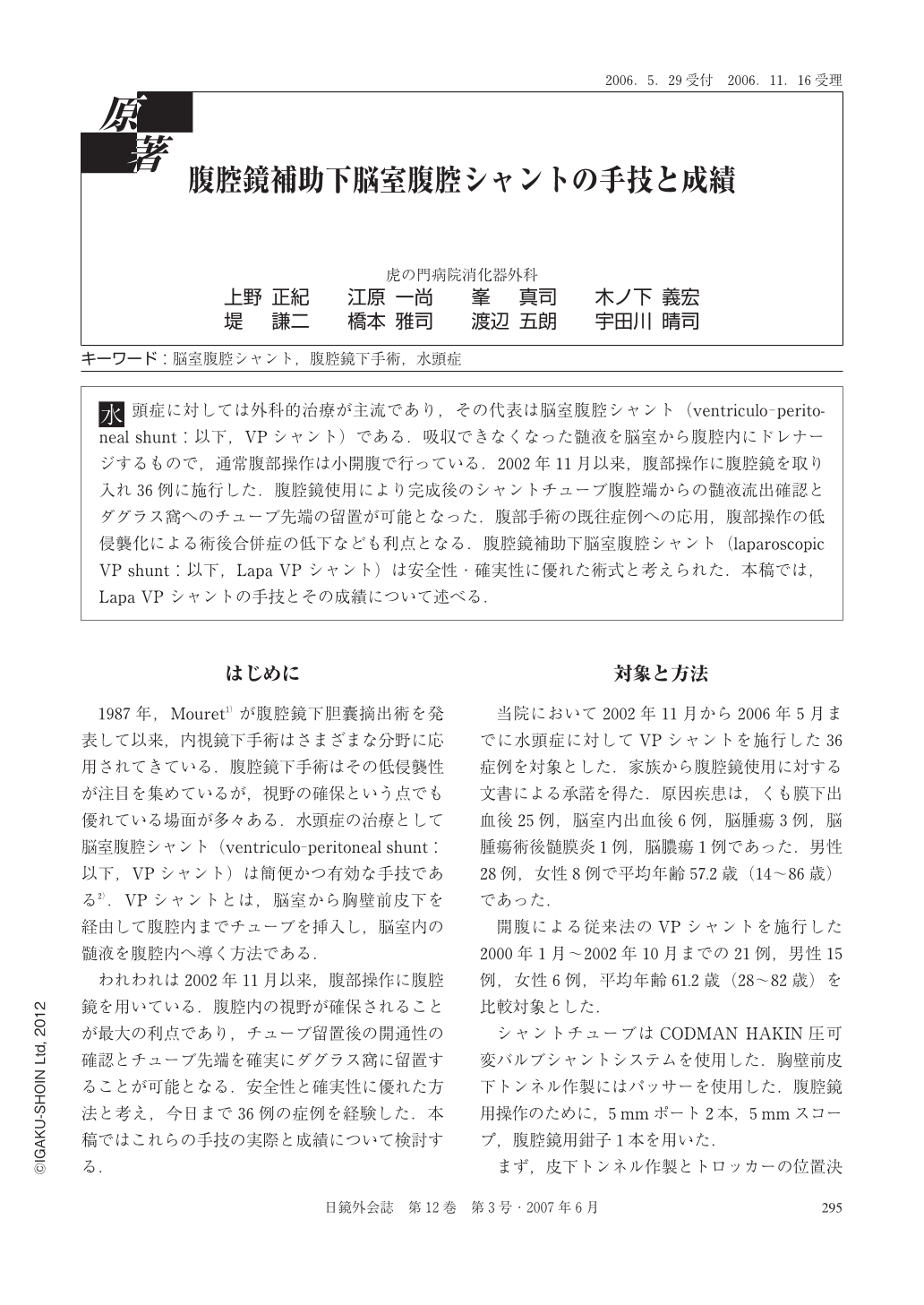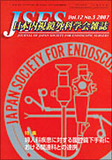Japanese
English
- 有料閲覧
- Abstract 文献概要
- 1ページ目 Look Inside
- 参考文献 Reference
水頭症に対しては外科的治療が主流であり,その代表は脳室腹腔シャント(ventriculo-peritoneal shunt:以下,VPシャント)である.吸収できなくなった髄液を脳室から腹腔内にドレナージするもので,通常腹部操作は小開腹で行っている.2002年11月以来,腹部操作に腹腔鏡を取り入れ36例に施行した.腹腔鏡使用により完成後のシャントチューブ腹腔端からの髄液流出確認とダグラス窩へのチューブ先端の留置が可能となった.腹部手術の既往症例への応用,腹部操作の低侵襲化による術後合併症の低下なども利点となる.腹腔鏡補助下脳室腹腔シャント(laparoscopic VP shunt:以下,Lapa VPシャント)は安全性・確実性に優れた術式と考えられた.本稿では,Lapa VPシャントの手技とその成績について述べる.
Ventriculoperitoneal shunt(VP shunt)are among the most frequently performed operations in the management of hydrocephalus. Usually, the abdominal portion of this technique has required mini-laparotomy. We used a laparoscopic technique to aid in the placement of the peritoneal portion of the catheter. At Toranomon Hospital for November 2002 to May 2006, 36 patients with hydrocephalus underwent laparoscopic VP shunt(Lapa-VP shunt). The abdominal procedure is begun simultaneously with the neurologic portion of the procedure. After pneumoperitoneum is established using a 5-mm camera port, a 5-mm working port are introduced into the peritoneal cavity. Once the catheter is placed ventricularly, it is tunneled subcutaneously to the abdomen by means of passer. The VP catheter tied at the tip of passer is introduced through a working port into the peritoneal cavity toward the head. Positioning and function are also confirmed under direct visualization. All patients tolerated this procedure well, and there were no complications. The benefits of this procedure include direct visualization of catheter placement and appropriate function. We recommend Lapa-VP shunt in hydrocephalus patients as a good alternative to the open technique.

Copyright © 2007, JAPAN SOCIETY FOR ENDOSCOPIC SURGERY All rights reserved.


